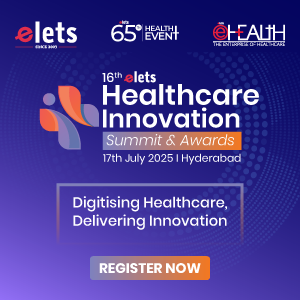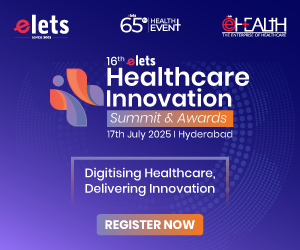Open Standards
Open standards begin when a collaboration of interested parties’ results in a consensus on specifications for implementing common requirements. They permit open access for anyone desiring to utilize the results in a way that enables conformity across implementations. While open standards describe openness in both the standards setting process as well as access to the specifications, industry de facto and government-led standardization alternatives are less open. The choice to use open standards over the alternatives can improve one’s ability to realize common objectives.1 Standards have historically evolved from the codification of existing practices that had achieved market dominance.
Interoperability Standards in Healthcare
Recently there was a diagnostic dilemma regarding the diagnosis in a poor patient. Somehow it was arranged to get the MRI of the heart free. However, when it came to reviewing images it was found that the CD and the DVD containing the images would not run on the cardiologist’s computer, in spite of it being a high-end machine. This example classically showcases the problems of lack of interoperability. Here, you have the resources and the will to provide cheap medical care, but are unable to do so due to the lack of ability of the various machines to relate with and read each other. This happens every day and is a major limitation in the application of telemedicine and technology in the care of patients, besides being a poor business model as it will hence forth reduce the faith of doctors on an advanced technology, as its output is not compatible to his system and does not effectively aid him in diagnosis. This case opens up a new dimension in understanding the linkage between the need for not only advanced technology in diagnosis but also underlines the emphasis on interoperability and linkage with legacy systems.

The use of IT to electronically collect, store, retrieve, and transfer clinical, administrative, and financial health information has great potential to help improve the quality and efficiency of healthcare and is critical to improving the performance of the healthcare system globally.2 Key to making healthcare information electronically is interoperability i.e. ability to share that data among healthcare providers. This capability is important because it allows patients’ electronic health information to move with them from provider to provider, regardless of where the information originated. The answer may lie in how applications are tied into the hardware, which the information resides upon, or how the hardware locks down the data in proprietary formats.

If we look at open standards, this may be the way forward. Storing attributes such as metadata and customer metadata as a mechanism to decouple data from the filing application releases the constraints on data sharing3. To achieve this we have to recognize the need for public and private sector collaboration to achieve a national interoperable health infrastructure. Aptly summarized by Health IT4 the benefits of interoperability are:

(a) Complete, accurate, and searchable health information, available at the point of diagnosis and care, allowing for more informed decision making to enhance the quality and reliability of health care delivery.

(b) More efficient and convenient delivery of care, without having to wait for the exchange of records or paperwork and without requiring unnecessary or repetitive tests or procedures.
(c) Earlier diagnosis and characterization of disease, with the potential to thereby improve outcomes and reduce costs.
(d) Reductions in adverse events through an improved understanding of each patient’s particular medical history, potential for drug-drug interactions, or (eventually) enhanced understanding of a patient’s metabolism or even genetic profile and likelihood of a positive or potentially harmful response to a course of treatment.
(e) Increased efficiencies related to administrative tasks, allowing for more interaction with and transfer of information to patients, caregivers, and clinical care coordinators, and monitoring of patient care.
Needs of Open Standards in Indian Healthcare
Open standards help to consolidate competing standards, increasing the aggregate pool of resources available for using them without the cost inefficiencies of a single vendor de facto. For suppliers, this helps to consolidate a larger customer base. Instead of picking the portion of customers using the proprietary standards you are equipped to support, you can instead offer products and services to a larger consolidated base of users.
For users, this pools vendors together, increasing competition and price pressures, yielding better quantity and quality of vendor options. This also results in consolidated pools of people skills. Instead of looking for specialists in the proprietary standard you use, you can choose among a larger base of consolidated specialists empowered to support multiple vendors using the same open standard. By reducing costs, speeding time-to-market, and increasing market adoption and acceptance, products and services developed around open standards benefit from a higher return on investment.
“Open standards help to consolidate competing standards, increasing the aggregate pool of resources available for using them without the cost inefficiencies of a single vendor de facto.”
They benefit from lower barriers to market entry created through decreased customer risk with vendor selection as the association of support and durability with the individual vendor is transferred instead to the pool of vendors supporting open standards. The keys can be summarized as :
(a) Optimize options
(b) Reduced risk
(c) Durability
(d) Flexibility
(e) Quality
(f) Improve vendor independence
(g) Increase vendor choice
(h) Decrease vendor cost
(i) Optimize interoperability
(j) Simpler integration
(k) Quicker integration
(l) Encourage repeatable processes
(m)Increase available resources
(n) Optimize communication
(o) Increase return on investment
(p) Increase acceptance of products and services
The standards for telemedicine are more multifaceted than other similar systems due to intrinsic complexities concerning numerous technologies with their own standards. Some of these technologies include:
(a) Medical practices
(b) Telecommunication
(c) IT
(d) Wireless
(e) Documentation benchmarks
(f) Imaging
(g) Compression
(h) Data structures
(i) Video streaming standards.
The telemedicine standards must adhere to these standards, and simultaneously give space for a unique open standard business model of its own for sustenance. Fairly strong Indian Standards made by Technical Working Group (TWG) are published in May 2003, these can be downloaded.
Business Case for Tele-health
The business case for tele health in study have been found around understanding goals and challenges, provide healthcare virtually anywhere, anytime. Focus is to deliver the right mix of consulting, system integration, and managed services to enable you to get the most from telemedicine solutions and align technology environment to specific objectives7. This will
(a) Make specialist services more accessible
(b) Control costs of patient
(c) More closely monitor patient health, enabling more frequent or rapid intervention
(d) Increase proficiencies through continued medical education and professional collaboration
(e) Understanding the Less Tangible Benefits
Business study needs to conduct a comprehensive analysis of the market potential for telemedicine services using existing media with identification of opportunities and threats and specific insight on the regulatory barriers, to achieve this
(a) Review of telemedicine technology, applications and services.
(b) Modeling of the telemedicine service value chain. The modeling of the end-to-end telemedicine services value chains by identification of the main actors and organizational structure of the services.
(c) Market analysis. The measurement of the market size and of the opportunities for existing and potential services. The analysis of the different scenario for roll-out of such services
(d) Review of the regulatory aspects.
Recent Parallels
US Federal agencies are now banding together to plan for how they are going to provide this information in an open, standardized manner that enables citizens to efficiently and accurately mine data, make comparisons, and perform analytics across all government sectors. In effect on the Jan 21, US formally recognized three new interoperability standards related to electronic health records, personal health records and electronic quality monitoring.
(a) IS04 Emergency Responder Electronic Health Record Version 1, which applies to accessing and sharing patient data in emergency care situations. These standards address how emergency responders access the electronic health records of patients involved in a mass incident such as a terrorist attack or natural disaster. It describes how to obtain a person’s lifetime medical records, including a list of medical problems and history, and transmit that information to emergency responders without compromising security or privacy.
(b) IS05 Consumer Empowerment and Access to Clinical Information via Portable Media Version 1, which applies to exchanging personal health record data between patients and providers through physical medial or secure e-mail exchange. These standards relates to how individuals access their own electronic health records and transmit them using a storage device such as a thumb drive or DVD. It establishes a standard level of encryption and requires password protection to call up the records. In addition, it develops an audit trail so users can track how many times a particular record has been downloaded.
(c) IS06 Quality Version 1, which is designed to enable real-time or near real-time feedback to clinicians regarding quality indicators for patients (Government Health IT, 1/22). These standards are aimed at researchers and public health organizations seeking to use medical records to track patient care and make sure health care providers are using best practices.
The Flip Side-
To our mind integration of open source methodologies is an integral part in making medical services that are bound to involve the use of information technologies. This will help in making information gathering and dissemination seamless. However, at the same time one cannot ignore the important aspects of confidentiality that the ISO’s seem to ignore.
An open source that can access the patient’s records is good news. But how much should be available to the various authorities at what times and if at all remains a mute question? How much is too much? For example, if an individual is not keen on disclosing his or her vasectomy details or hysterectomy details to a prospective employer, how is the system going to protect that.
Or this information pertinent to employability as say- an Office boy? In these scenarios it is the limitations that should design the system. For example the patient doctor relationship is sacrosanct and it is also protected by law. Accessing ones own records is fine, but accessing the Doctors uation and his notes at the time should remain away from unnecessary scrutiny to assist in free and unhindered decision making. Similarly, the amount of information regarding a patient’s health that the doctor may be forced to divulge remains a sacrosanct covenant, that should be left alone as much as possible and only resorted to under extreme circumstances.
Final words
Most people try to understand the standards world, through their understanding of Open Source, given the human mind’s compulsory need to apply known patterns to new ones. Companies adopting this philosophy along with the standards bodies will be the change agents in the Healthcare sector and help to improve access to information, which is vital to improving the quality of care. Not only that, it will help to create workflow efficiencies that reduce the cost of care but also for the consumption of products and services and the creation of internal solutions, using open standards can decrease your costs, speed time-to-market, expand available options and resources, improve communications, reduce risk and create more durable solutions.
Using open standards in the products and services you produce and internal applications directed towards such efforts offers these same benefits plus increased adoption and market acceptance of solutions and lower market barriers through decreased customer risk. It also allows you to participate in faster growing markets. However, the commercialization of the telemedicine services has not yet reached maturity.
A number of important issues such as absence of a specific regulatory framework, lack of common standards and norms etc. are still hindering the commercialization process of tele-medicine services. As a result, a potentially large Indian market has not yet fostered telemedicine as a new method of work. An important viewpoint that involves the medical profession involves the increased approach to medical services in commercial terms. It is looked upon an as an emerging market, forgetting the moot point that it reduces every human being including us to the level of a commodity. Therefore at the end of it, it is not profiteering for the hospitals that counts, but the provision of medical care to lowest common denominator which means the poorest human being, at the cheapest rates possible. 
|
This Conference is unique because it brings together professionals from diverse disciplines such as Public Health, Micro-finance and e-Government on a common platform to share ideas, evolve strategies and showcase solutions for good governance using ICT and mobile technologies. Researchers, academics, practicing professionals from Industry, Health-care professionals, NGOs, bureaucrats and policy makers are all expected to contribute to this effort. Details about ICEG-2010 are available at Contact: ICEG Secretariat <iceg.secretariat@iimb.ernet.in> Centre for International Health – University of Bergen (Norway), Indian Institute of Technology Delhi Collaborating Partners: Handheld Solutions & Research Labs (HANDSREL), Indian Association of Medical Informatics (IAMI), OpenXdata Consortium, CSI SIG-eGOV, Mobile Government Consortium International (mGCI) Corporate Partners: PercipEnz Technologies Inc., Microsoft Research (India) Bangalore |
Be a part of Elets Collaborative Initiatives. Join Us for Upcoming Events and explore business opportunities. Like us on Facebook , connect with us on LinkedIn and follow us on Twitter , Instagram.
"Exciting news! Elets technomedia is now on WhatsApp Channels Subscribe today by clicking the link and stay updated with the latest insights!" Click here!





 The 7th International Conference on e-Governance [ICEG-2010] is being held at the Indian Institute of Management Bangalore on April 22-24, 2010. The major themes of ICEG-2010 are:
The 7th International Conference on e-Governance [ICEG-2010] is being held at the Indian Institute of Management Bangalore on April 22-24, 2010. The major themes of ICEG-2010 are:
